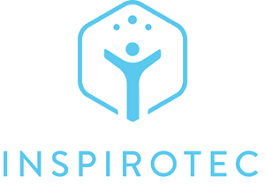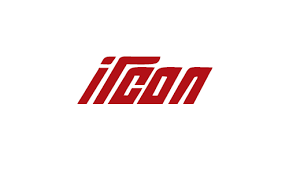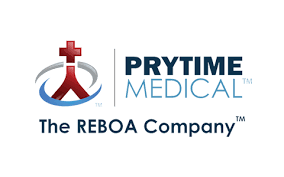
Garrett Technologies, Inc. We specialize in advanced electrical engineering and embedded software development for both medical and consumer products. It is our commitment to provide advanced thinking and technologies to our clients to help them bring their ideas to market. Our expertise includes both extensive design of Class l, II and III medical devices and a broad development of consumer, industrial and IoT products.
We are ISO 13485:2016 Certified. Certification audited and granted by TÜV SÜD America. Our Quality Management System meets FDA 21 CFR 820.3 and 21 CFR 820.30 requirements. We are compliant with ISO 9001, IEC 62304 and ISO 14971.
An Anti-Cancer “GPS” System
The development of custom proteins for therapeutic use has just taken a giant step forward.
In 2024, half of the Nobel Prize in Chemistry went to Google DeepMind researchers John Jumper and Demis Hassabis, for their creation of AlphaFold. AlphaFold, an AI program, successfully predicted a protein’s shape and function from its chemical sequence.The other half of the prize went to David Baker of the University of Washington for solving the opposite problem: starting with the desired function of a protein, and deriving the amino acid sequence that would fold up into a molecule capable of performing that function.
Engineering Surface Patterns to Combat Infection
In a time when bacterial resistance to current antibiotics is rising, medical science needs all the new tools it can fit into its infection-fighting toolbox. In addition to new antimicrobial drugs, and repurposing older drugs to fight bacteria, new technologies are under development that may be able to stop infection without any drugs whatsoever.
Researchers at the University of Nottingham have come up with a way to halt, and even prevent infections on plastic medical devices, which relies on alterations to the surface of the plastic itself. Their research could not only help to prevent infection through medical devices, but could also lead to technologies that help the body to eliminate bacteria before infections take hold.
Perceptualized Date
“Humans possess more than one sense,” says Lutz Bornmann of the Max Planck Society in Germany, in his article The Sound of Science, “and there is no biological reason not to use the other ones.” When he puts it that way, it sounds quite reasonable. Much of western culture is geared toward visual representation of data–in images and text–but humans also have a highly evolved and very sophisticated system of auditory processing. Could we not also represent data through sound?
Next-Generation Hearing Technology
Cochlear implants have been life-changing for many people with severe hearing loss. But cochlear implants have a number of limitations, and they don’t work for all types of hearing loss, for example when the cochlear nerve isn’t functional, as can be the case for patients with Neurofibromatosis type 2, cochlear ossification, certain types of head trauma, and other conditions. Auditory brainstem implants could offer an alternative to people for whom cochlear implants aren’t an option.
Printing Tissue
Scientists at the Feinberg Lab at Carnegie Mellon University have created the first collagen-based microphysiologic system using FRESH 3D bioprinting.
Traditional human tissue models, such as organ-on-chip devices, are restricted by available manufacturing techniques. They are made from silicone rubber, plastics, or other synthetic materials. As a result, they’re unable to fully replicate natural tissue environments, so their effectiveness is limited.
FDA Issues 3p510K Guidance
On November 21, 2024, the US Food and Drug Administration (FDA) published its final guidance for manufacturers seeking to authorize low-to-medium risk devices through the Third Party 510K (3P510K) Review Program. The program uses qualified third parties to conduct initial reviews of 510K device submissions. The FDA’s guidance also describes the use of third party review organizations for Emergency Use Authorization (EUA) requests.
Assistive Tech’s Rapid Growth
Between 2024 and 2025, the market value for assistive technologies grew from $2.9 billion to $4.97 billion. This figure is projected to grow to $30.9 billion by 2033. The growth is being driven by an aging population, increasing numbers of disabilities, and technological development. The United States leads the growth in demand, comprising 35 percent of the market, and of this, mobility devices–wheelchairs and walking aids–make up 40 percent. But in addition to mobility assistance, there are some exciting new advancements in products addressing other needs, including sensory assistance–hearing, sight, and even touch–exoskeletons, neural network grafts, and more.
Unveiling Secrets of the Universe
The Vera Rubin Observatory is set to begin its first mission: to scan the skies for cosmic events and objects. Its enormous camera will enable scientists to investigate cosmic phenomena on a scale–and at a resolution–previously unseen. Three particular phenomena of interest to the Observatory will be dark matter, dark energy, and Type Ia supernovae. For the next ten years, the Observatory will perform regular scans of the skies, looking for these and other objects and events. The Rubin Observatory plans to begin its survey, the Legacy Survey of Space and Time, in late 2025, and will release its first data set 12 to 14 months later.
Revolutionizing Health and Wellness with Tech
The 2025 Consumer Electronics Show, which ran from 7-10 January, introduced a wealth of new and exciting innovations, especially in the field of health and fitness technology. And yes, AI is in everything. Well, almost everything.
Complimentary Tools to Traditional Therapy
Smartphone apps aimed at supporting mental health are nothing new. Users looking for mood tracking apps, affirmations delivered by smartphone, digitally guided mindfulness and meditation, and virtual therapist sessions have plenty of options. However, until now, there have been no apps approved by the FDA as treatment for mental health conditions. The approval of the Rejoyn app as a treatment for depression is an exciting development, as it could help to increase the effectiveness of traditional talk and medication therapy. In addition, it could help to pave the way for cheaper, more accessible mental health care via smartphone.
A New Era in Insulin Delivery
The first insulin pump, the Biostator, was created in 1974. Continuous subcutaneous insulin infusion (CSII) devices have come a long way from that clunky bedside model. Many of today’s pumps can fit in the palm of the hand. Until recently, however, all of these devices were appropriate only for the treatment of Type 1 Diabetes. Insulin pump technology for Type 2 Diabetes had remained elusive. However, the FDA has recently cleared the very first automated insulin pump for adults with Type 2 diabetes, Insulet’s Omnipod system.
Sustainable Approach to Manufacturing
Green engineering means designing products for sustainable manufacture and use. That is, reducing waste and pollution during manufacture, promoting sustainability throughout the product’s life cycle, and minimizing the impact on both the environment and human health without sacrificing either efficiency or economic viability. The Sandestin Declaration of 2003 laid out the general principles of green engineering as:
Revolutions in OECTs
Organic electrochemical transistors (OECTs) have shown promise for different healthcare applications, from bioelectronics to biosensors and wearables. However current OECTs are subject to certain limitations, notably slow switching speeds and low temporal and operational stability. Studies are showing that a different architecture may be able to overcome some of these limitations. And this could be great news for medical applications.
How Materials are Shaping Medical Innovation
From e-skin that doesn’t lose sensitivity when it stretches, to a new substrate for implantable tech, materials science is breaking new ground every day. Here are eight recent developments in materials science that are paving the way for innovation in medical technology.
The Union of Engineering & Medicine
The union of engineering and medicine is creating new opportunities for innovations in human health. A recent study published in the Open Journal of Engineering in Medicine and Biology identifies several research areas in which biomedical engineering is poised to impact both engineering and medicine. These include: precision medicine, immuno-engineering, the engineering of cells and genomes, developing systems for human function augmentation, and “Exo-Brain,” that is, engineering the brain, including with AI.
Is the Future of Phlebotomy Robotic?
The first use of robots in surgery took place in 1984, when a team at the University of British Columbia Hospital in Vancouver used the voice-operated “Arthrobot” to assist with positioning a patient’s leg for orthopedic surgery. Over the next year, robots assisted with 60 more surgeries at that hospital. Since then, the use of surgical robots, and the diversity of their tasks, have grown exponentially and with great success.
Relieving Cognitive Burdens
Optimizing tools and technology for the user's physical needs has long been a concern in the workplace. In addition to increasing safety and comfort, ergonomic design aims to increase efficiency and productivity and reduce error. As technology advances and the cognitive load of work increases, optimizing the workplace for users’ cognitive needs is increasingly important. This is especially true in the medical field, where the needs of service providers, recipients, and institutions must be considered and where avoidable error on any side can cost lives.
Creating System Harmony
As IoT and smart technologies continue to develop, cyber-physical systems, which integrate computational components with physical processes, are paving the way for unprecedented innovation in industries such as manufacturing, transportation, and healthcare, to name a few. These systems integrate sensing, actuation, computation, and communications capabilities to interact with the physical world, leveraging these to improve the overall performance, reliability, and safety of the physical systems.
Challenges exist, of course, including security, hardware lead times, and the necessity of changing corporate communication and structure. However, in terms of productivity, scalability, and efficiency, the investment is already bearing fruit.
A Changing Task Environment
A study from the University of Zurich reports that developers use an average of 16 tools in the course of their day, and spend their time switching between a wide variety of tasks. The resulting complexity can be exhausting for individuals and can result in inefficiency for the organization. Amanda Silver, general manager for Microsoft’s platform engineering team, believes that platform engineering can improve the developer experience and optimize the software development lifecycle.
Platform engineering is already becoming crucial to IT development. According to one report, more than 80 percent of developers spend less than 30 percent of their time writing code–and sometimes as little as 12.5 percent. It’s estimated that by 2026, 80 percent of software engineering companies could be using platform teams as internal contributors for tools for application technology, reusable services, components, and more.
Affordable, Long Lasting, and Accessible
According to Grand View Research, the market for lower-power medical devices is expected to experience a five percent annual compounded growth rate through 2026. Low power medical devices offer a wide range of benefits for medical practitioners and patients alike. There are, of course, some challenges to implementation. However, the success of these types of devices are already starting to show bodes well for a more efficient and accessible future.
Utilizing End-User Input In Product Development
According to a study by PWC, companies that apply customer engagement strategies that involve user-driven requirements are twice as likely to expect growth of 15 percent or even more over the next five years. One-third of companies in the study considered customers to be their most important innovation partner. Collecting user input, therefore, is vital. Yet a study by McKinsey & Company found that more than 40 percent of companies aren’t communicating with their end users during the development process. More than half of the companies in the survey said that they have no objective way to assess the output of their design teams or to set targets for them.
Making Medicine Human Again
The launch of Chat GPT in November 2022 brought artificial intelligence into the public conversation, provoking speculation about everything from revolutionary assistive technologies to the wholesale replacement of human labor. The truth, as always, lies somewhere in the middle. When it comes to the medical field, many, like Dr. Eric J. Topol and endocrinologist Aaron B. Neinstein, see AI as a powerful tool that can help to make medicine even more human, empower patients to take charge of their own care, and free practitioners to be healers again.
The Medical Device Software Cybersecurity Standard
The world is growing more and more connected. In the field of medicine, this creates opportunities for better serving patients and achieving optimal health outcomes. However, it also creates risk: Improper data management can make patient data available to potentially malicious third parties, and it can lead to inaccurate data, which gives patients and their care providers inaccurate and potentially harmful misinformation. Tackling these potential downsides requires comprehensive regulation. For medical devices, network-connectable healthcare systems, and associated health IT system, the most important standard is UL 2900-2-1, and a range of other devices fall under the broader UL 2900-1 standard. Here are some of the ways UL 2900-2-1 and UL 2900-1 aim to help protect patients and medical entities.
AI Show Promise For Assistive Technologies
Artificial intelligence scanning a person’s thoughts and translating them into text might seem like the stuff of dystopian fiction, but the results of one study at the University of Texas are showing promise for different types of assistive technology.
About the Study
In the study, which was published in Nature Neuroscience, researchers at the University of Texas in Austin were able to record and decode study participants’ brain activity with a non-invasive decoder. The researchers then used an artificial intelligence algorithm similar to the one that underlies Chat GPT to translate that activity into text.
The Need for Humans Will Remain
Artificial intelligence is already revolutionizing health care, and changes are happening fast. Understandably, the disruption is causing questions and even concern. But the truth is, although the way medicine is practiced will necessarily change, the need for human practitioners isn’t going anywhere.
What is the IoMT?
The Internet of Things continues to transform various industries. The medical field, in particular, is in the midst of a revolution in how patients receive their care and how medical providers offer their services. The rollout of Internet of Medical Things devices, including in hospitals and as convenient, wearable products, provides data resolution never before possible, and these changes are serving as powerful tools, particularly as telehealth continues to expand. Here are some of the reasons why the IoMT is poised to change how patients receive medical care and manage their medical needs.
Why Go Virtual?
Immersive technologies provide novel, cost effective solutions in healthcare, and applications are only expected to grow. Forbes Magazine reports that healthcare applications involving AR, VR, and MR are on track to reach nearly $10 billion dollars by 2027.
That’s a growth of 3.5 times over the current value of $2.7 billion. Given the many advantages, and the few predictable disadvantages, it wouldn’t be surprising to see even more explosive growth in the future.
Used in Medical Devices
Generative artificial intelligence (AI) refers to a subset of machine learning techniques that involve training models to generate new data that is similar to existing data. In the context of medical devices, generative AI models can be used to generate new images or designs for medical devices, simulate the performance of medical devices under different conditions, or generate new medical imaging scans with added or removed features.
Why Is It Taking Off?
Computer hardware has made incredible advances over the decades. However, by itself, hardware is inert; software is needed to make use of these powerful devices. Early computers required wiring components together to program, but the field quickly moved toward machine language and text-based approaches, which are still the dominant paradigms today. Over the years, efforts have been made to offer an alternative to writing traditional code. Today, no-code platforms are gaining a significant amount of interest. Here are some of the ways the no-code paradigm is affecting how people create with computers.
For Medical Devices
Assurance cases can reduce the time to market for products requiring regulatory oversight, for example, medical devices, while building a strong case for a product’s safety and effectiveness.
Assurance cases are a method for communicating the safety, effectiveness, and performance of a product by demonstrating how the submitted evidence supports the manufacturer’s claim.















































































































